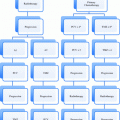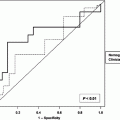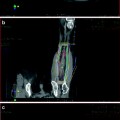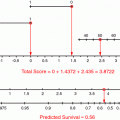Covariates
Subgroups
Number of patients
Missing values (%)
Survival at 6 months (%)
Median survival (weeks)
Log-rank p value a
1
Age at 1st visit
≤68 years
207
0
47
21
0.18
>68 years
188
39
19
2
Primary cancer site
Lung
143
0
34
16
<0.0001
Breast
80
65
52
Prostate
56
60
39
Others
116
31
14
3
Site of metastases
Bone only
113
0
55
29
<0.0001
Others
282
38
16
4
Weight loss (≥10 % over last 6 months)
Yes
132
30
14
<0.0001
No
263
49
26
5
KPS
>50
278
0
52
27
<0.0001
≤50
117
20
8
6
Time from 1st diagnosis of cancer to 1st consultation
>12 months
202
0.5
51
26
<0.0001
≤12 months
191
33
15
7
Analgesic consumption within last 24 h of 1st consultation
None
102
0
53
30
0.25
Non-opioids
44
36
19
Weak-opioids
54
50
26
Strong-opioids
195
37
17
8
Pain
0
87
6
45
20
0.l
1–3
126
49
25
4–7
111
34
16
8–10
49
47
21
9
Fatigue
0
26
9
64
63
<0.0001
1–3
87
60
35
4–7
165
39
19
8–10
83
32
13
10
Nausea
0
200
7
4S
24
0.0004
1–3
111
44
19
4–7
41
37
19
8–10
16
6
10
11
Depression
0
92
13
49
24
0.004
1–3
149
49
25
4–7
32
41
20
8–10
19
16
S
12
Anxiety
0
72
13
50
24
0.5
1–3
143
46
19
4–7
95
41
19
8–10
33
40
16
13
Drowsiness
0
71
9
64
36
<0.0001
1–3
137
50
24
4–7
112
33
17
8–10
39
18
8
14
Appetite
0
73
7
54
33
<0.000 1
1–3
102
50
24
4–7
128
45
I8
8–10
63
19
11
15
Sense of well-being
0
16
15
69
56
<0.0001
1–3
130
52
27
4–7
151
39
18
8–10
40
29
14
16
Shortness of breath
0
131
7
58
34
<0.0001
1–3
126
39
18
4–7
74
30
14
8–10
36
36
14
Table 2
Multivariate analysis of six prognostic factors included in predictive survival models by Chow et al. (2002)
p value | Hazard ratio (95 % CI) | |
|---|---|---|
Primary cancer site | <0.0001 | |
Breast | 1.00 | |
Prostate | 1.94 (1.25–3.01) | |
Lung | 2.10 (1.48–2.96) | |
Others | 2.49 (1.75–3.50) | |
Site of metastases | <0.0001 | |
Bone metastases only | 1.00 | |
Others | 2.07 (1.54–2.78) | |
KPS | <0.0001 | |
>50 | 1.00 | |
≤50 | 2.10 (1.64–2.69) | |
ESAS fatigue score | 0.005 | |
0 | 1.00 | |
1–3 | 1.26 (0.71–2.21) | |
4–7 | 1.66 (0.96–2.86) | |
8–10 | 1.84 (1.02–3.32) | |
ESAS appetite score | 0.009 | |
0 | 1.00 | |
1–3 | 1.00 (0.69–1.43) | |
4–7 | 1.00 (0.71–1.42) | |
8–10 | 1.78 (1.15–2.68) | |
ESAS shortness of breath score | 0.04 | |
0 | 1.00 | |
1–3 | 1.30 (0.97–1.74) | |
4–7 | 1.67 (1.18–2.35) | |
8–10 | 1.33 (0.85–2.08) |
After the establishment of the initial models, the same team worked on performing temporal validation of the models by testing them on patients attending the same clinic in a different year (Chow et al. 2009). This work utilized a third form of test called the D index to assess the performance of the models. The D index quantified the discrimination of the models based on their abilities to separate the risk of death among groups of patients; for this statistical test, the larger the D statistic, the greater the degree of separation. The models had C index values ranging from 0.65 to 0.68, which represented reasonable concordance, and D index values of 0.99 to 1.41, representing good separation of prognostic groups. However, generalized R2 values remained poor (range: 0.27–0.31), indicating that the models accounted for less than one-third of the variability in survival.
Chow and colleagues aimed to simplify their original prognostication models (Chow et al. 2008). They cited difficulty in extracting ESAS scores as the reason why they believed a simpler model made up of only three readily available factors—primary cancer site (breast, prostate, lung and others), site of metastases (bone vs. others) and KPS—deserved consideration. As with their previous models, they utilized two scoring approaches: the partial score method and the number of risk factors method. In order to validate these new models, they conducted both temporal and external validation by comparing cohorts from different years and at different institutions. In evaluation of the performance of these predictive models, C index values ranged from 0.63 to 0.66 and D index values ranged from 0.81 to 1.09, indicating reasonable separation of the three prognostic groups formed by the models. In addition, it was noted that the models were not hindered by over-optimism. In contrast to the previous R2 values for the initial (R2 = 0.31) and temporal validation (R2 = 0.27) cohorts of the six-factor models, the R2 values for the three-variable models were lower across the initial, temporal and external validation sets (R2 = 0.23, 0.24, 0.15, respectively). The reduction in the generalized R2 values indicated that the three ESAS variables that were omitted did contribute statistical significance to the six-factor model. However, these statistics should be considered with reservation, as R2 values are generally not reported in predictive models, and when they are reported, values are generally low despite successful validation (Toscani and Brunelli 2005).
Although some factors were not included in the models by Chow et al., in general, survival of metastatic cancer patients is dependent on performance status (Chow et al. 2002), symptoms comprising part of the “terminal cancer syndrome” (Reuben et al. 1988), and other patient symptoms which include asthenia, anorexia, cachexia, weight loss, dysphagia, xerostomia, delirium and cognitive impairment (Llobera et al. 2000; Maltoni et al. 2005). Additionally, some studies state that nonclinical factors, such as social support (Schoenbach et al. 1986) and religion (Phillips and Smith 1990; Jarvis and Northcott 1987) also influence survival in this patient population, although others have concluded that psychosocial factors are not associated with survival in palliative advanced cancer patients (Chow et al. 2008; Chow et al. 2002).
3 Risk Factors for Toxicities
3.1 Radiotherapy-Induced Nausea and Vomiting
The earliest studies reported the incidence of vomiting as 60 % in those receiving fractionated radiotherapy to the whole abdomen (Priestman and Priestman 1984) and 80 % when single fractions were given (Danjoux et al. 1979; Priestman et al. 1990). Dennis et al. (2011a) summarize the risk factors for radiotherapy-induced nausea and vomiting (RINV) (Table 3). These predictors include a younger age, female gender, low alcohol consumption, and previous experience of emesis (Feyer et al. 1998). In addition, radiation to the upper abdomen is well recognized as one of the most emetogenic sites for radiation (Coates et al. 1983).
Table 3
Risk factors for the development of radiotherapy-induced nausea and vomiting
Anatomic site being irradiateda |
Concurrent chemotherapya |
Previous chemotherapy-induced nausea and vomitinga |
Radiotherapy field size greater than 400 cm2 a |
Age less than 55 years |
Female |
Anxiety |
Daily alcohol consumption less than 100 g |
High dose per radiotherapy fraction |
High total cumulative radiotherapy dose |
In an Italian Group for Antiemetic Research in Radiotherapy (IGARR) observational trial, the irradiated site being the upper abdomen and field size (>400 cm2) were statistically significant therapy-related risk factors for radiation-induced emesis, while concomitant chemotherapy and previous vomiting induced by chemotherapy were the only significant patient-related risk factors (Feyer et al. 1998). Although not statistically significant, a relatively high incidence of RINV was also found in patients receiving radiotherapy to the thorax (31 %), head and neck region (30.5 %), brain (35 %), and pelvis (24.1 %). These findings were concurrent with an earlier IGARR observational trial (The Italian Group for Antiemetic Research in Radiotherapy 1999). The reported incidence of RINV, by irradiated site, was 71.4 % for upper abdomen patients, 48.4 % for thorax patients, 40.4 % for head and neck patients, 40.4 % for brain patients, and 39 % for pelvis patients. Enblom et al. reported a high incidence of nausea in patients receiving radiotherapy to the abdominal or pelvic regions (63 %) and the brain or head and neck regions (48 %) (Enblom et al. 2009).
Due to the unexpected higher incidence of RINV in patients receiving head and neck and brain radiation (Enblom et al. 2009; Maranzano et al. 2010), reclassification of both head and neck and brain radiation from minimal to low emetogenic risk group status was adopted by the Multinational Association of Supportive Care in Cancer (MASCC) and the European Society of Clinical Oncology (ESMO) in their updated 2009 antiemetic guidelines (Feyer et al. 2011), as well as in the 2011 updated antiemetic recommendations from the American Society of Clinical Oncology (ASCO) (Basch et al. 2011).
3.2 Other Toxicities
Additional toxicities are summarized in two systematic analyses published by Chow et al. (2012, 2007), who reported that risk of toxicities is determined by radiation site and dose. In general, they found that toxicities were mild and patients who received single fraction or multiple fractions treatment experienced similar acute toxicities. In contradiction, three trials have reported more acute toxicities in patients receiving multiple fractions (Hartsell et al. 2005; Kaasa et al. 2006; Foro et al. 2008). Acute toxicities reported from various studies are summarized in Table 4.
Table 4
Summary of acute toxicities reported by the literature
Reference | Nausea and vomiting | Lethargy/tiredness | Diarrhoea | Skin reaction | Additional | Overall |
|---|---|---|---|---|---|---|
Price et al. (1986) |









